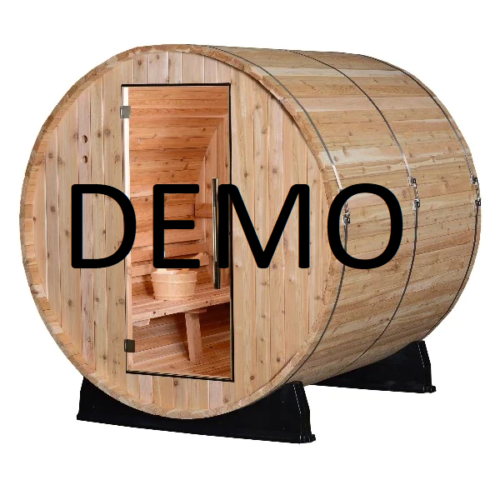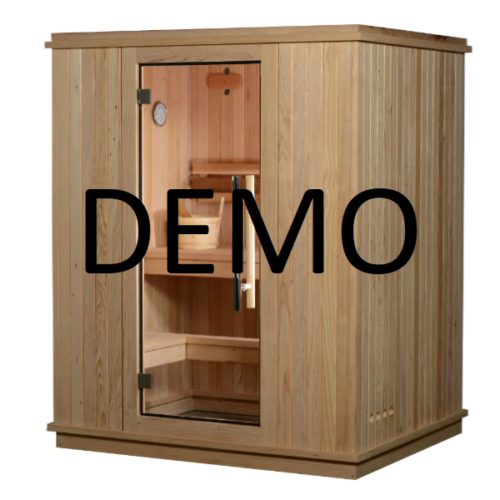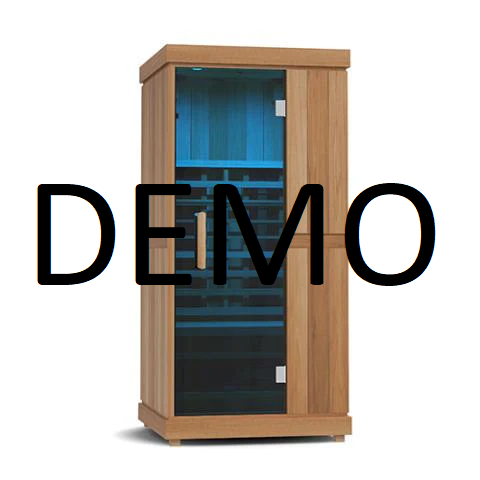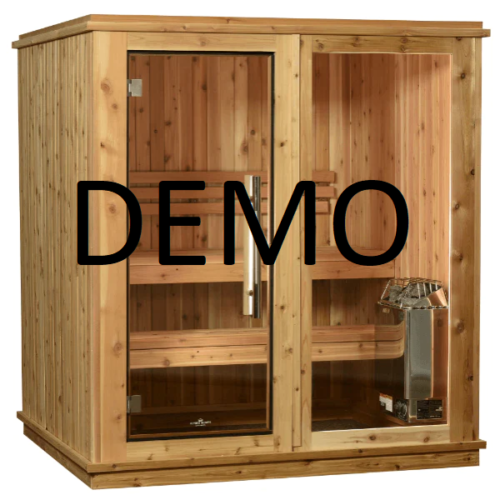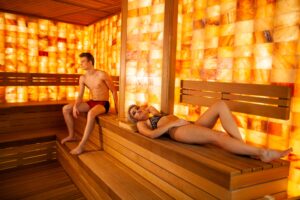 Sauna Types Overview
Sauna Types Overview
Sauna costs vary depending on the design complexity. For instance, a basic Finnish sauna starts at $2,000, while a high-end infrared sauna can cost over $10,000. There are also portable steam saunas available for under $100. Consider the installation location when shopping for a sauna, as some are better for indoor or outdoor use. Here are the advantages and disadvantages of various sauna types.
1. The wood-burning sauna
The most traditional type of sauna, with a history that spans thousands of years and various cultures. Its key features are its fire heating and low humidity. It is recommended for outdoor installation due to the smoke it produces.
Maintaining a consistent temperature involves preparing and stoking the fire in a wood stove, which heats the stones regulating the temperature. Achieving precise temperature control is challenging. To increase humidity, water can be poured on the rocks. Using a wood-burning sauna requires a constant wood supply and regular coal cleaning.
Pros:
- Include its relatively low cost
- Independence from electricity
- Capacity for larger groups
Cons:
- It is not suitable for indoor installation
- Takes time to heat up
- Demands more maintenance
2. Electric Sauna
For a sauna experience, an electric sauna should be exactly the same as a wood-fired sauna, just without the wood smell. Electric saunas still use stoves and stones for heating. Therefore, the humidity is very low, but in the case of a wood-fired sauna, you can pour water over the stones.
Electric saunas can be installed indoors or outdoors, but outdoor models still require a reliable electrical connection, which can be added to the installation costs. In terms of upfront costs, an electric sauna costs approximately $3,000 to $5,000. There are also different sizes, although it is not uncommon to find electric saunas that are the same size as wooden models.
Pros:
- More temperature control and faster heating
- Can be installed indoors or outdoors
- Available at different price points
Cons:
- Dependent on electricity
- Not suitable for large groups
- May not appeal to traditionalists
3. Infrared Sauna
If traditional Finnish saunas are on one end of the “traditional vs. modern” spectrum, infrared saunas are firmly on the modern side of the spectrum. Both types of saunas achieve the same effect by warming the user’s body, but the mechanism is very different for infrared saunas. In particular, the actual room temperature of an infrared sauna is relatively low. (Temperatures are still over 100 degrees Fahrenheit, but not as high as a full “hot room.”) However, the use of infrared light waves heats the user’s body directly.
For some sauna purists, that’s not enough. However, if you just want to relax in a sauna, this is the one for you. Also consider the type of infrared light used in the sauna. Some models use far infrared light, some use near infrared light, and some use both. Both types of light have unique health benefits. Infrared saunas cost about $2,000 to $12,000, come in a variety of sizes, and have many upgrade options.
Pros:
- Small units are affordable
- Provides a comfortable experience
- Heats up quickly
Cons:
- Larger models are expensive
- Not approved by traditional sauna enthusiasts
- Repairs may be costly
4. Steam Sauna
In contrast to low-humidity saunas, which are usually made of wooden materials, steam saunas or steam rooms are characterized by high humidity, for example, almost 100% humidity. For this reason, steam saunas are often made of tiles and other mildew-resistant materials. Even if suitable materials are used, professional installation is recommended to prevent mold.
The average operating temperature of a steam sauna is lower than that of a conventional sauna. However, you should still feel hot due to the high humidity. If you need a sauna to alleviate respiratory problems, a steam sauna may be the best choice for you. Most steam sauna models on the market use electricity to boil water and release steam. The average cost to install a steam sauna is between $4,000 and $6,000.
Pros:
- Can assist with respiratory issues
- Operates at a lower temperature
- Suited for those who prefer moist heat
Cons:
- Prone to mold problems
- Professional installation is recommended
- Dry saunas are more comfortable for extended use
5. Sauna-Shower Combination
If you don’t want to use up valuable space in your home or outdoor space to install a sauna, a steam shower or dry sauna and shower combination is a great way to utilize your existing shower component. You can enjoy the benefits of a sauna by converting your shower into a sauna/shower combination or adding a new sauna/shower combination.
Of course, this requires professional installation, even for prefabricated sauna and shower combinations that retail for around $3,500 to $6,000.
Steam shower combinations are more common than dry sauna shower combinations. The experience of a sauna and shower combination may be different than that of a dedicated sauna, but it may be a better option for increasing the value of your home.
Pros:
- Does not require additional space
- Potential to increase property value
- Convenient to use
Cons:
- Prone to mold issues
- Professional installation is advised
- Replacing the entire shower may be preferable to retrofitting



